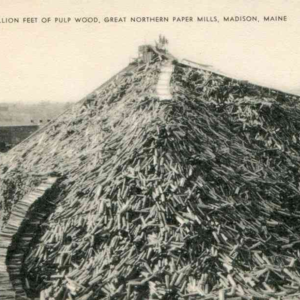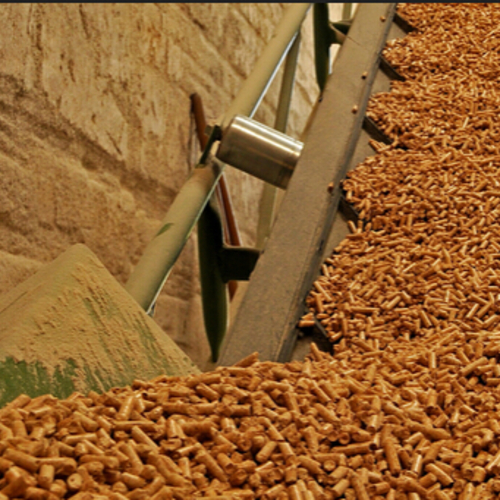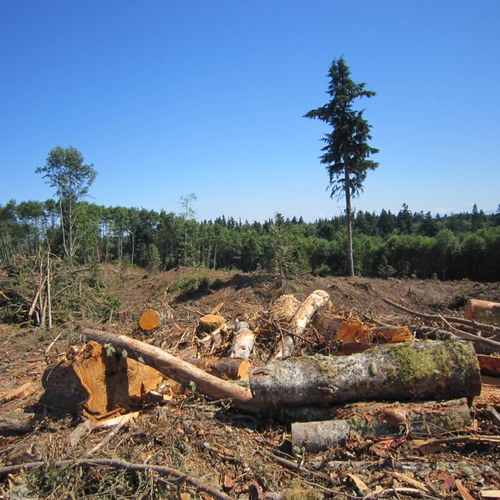
The European Court of Justice has thrown out a challenge to a renewable energy policy that encourages the use of compressed wood pellets for utility-scale power generation, ruling that the group behind the petition didn’t have the legal standing to bring the claim.
The group, the Partnership for Policy Integration (PFPI), filed its petition with the Luxembourg-based court last year, arguing that the inclusion of wood pellets in the European Union’s Renewable Energy Directive (RED II) was a threat to both forests and climate.
Millions of tons of wood pellets sourced from U.S. forests are burned annually in Europe and supply about 35% of the region’s renewable energy portfolio, according to PFPI. Government incentives helped double wood consumption between 2000 and 2017; at one Drax power plant in the U.K, subsidies are about $1 billion a year.
Biomass advocates say the resource is correctly classified as renewable because trees that are harvested for fuel are replaced by new growth, in effect neutralizing the carbon impact of burning it. But critics point to damaging forest clear cutting in both Europe and the southeastern U.S. that supply the pellet industry, and argue that burning the fuel adds more carbon to the atmosphere than burning coal.
The court’s ruling earlier this month was not on the merits of the claims, but on the legal standing of those who brought the challenge, according to a news release. “On 11 May 2020 the EU Court published an order that the applicants who have brought this case, including individuals and groups from Estonia, France, Ireland, Romania, and Slovakia, do not have legal standing and that it will not therefore make a decision on whether or not the biomass provision of RED II should be annulled,” the statement said.
PFPI Director Mary Booth said an appeal is under consideration and that it was “critical” that the court hear the case.
“Since the case was filed,” her statement said, “additional evidence of the damage inflicted by the biomass industry has emerged, with new reports of logging old-growth for wood pellets, not just in the U.S. but in British Columbia’s inland rainforest, Estonia, and Romania’s Carpathian Mountains.”
The trade group representing wood pellet producers in the U.S. hailed the decision. “With this procedural ruling, the European Court of Justice clears doubts on the future of the EU’s largest renewable energy source,” The US Industrial Pellet Association said in a prepared statement.
Seth Ginther, the group’s executive director, said in a statement, “Although this was a procedural ruling, this was the right overall result, as the arguments put forward in the case had no value.”
Conflicting claims on biomass
Dropping wood pellets from the list of recognized renewable fuels would have been a blow to Europe’s plan to reduce carbon emissions. RED II, according to the European Commission, sets a target for renewable energy consumption of 32% by 2030.
The biomass industry and Booth’s group have traded blows before over the environmental consequences of producing and burning pellets. Last year, Booth’s group released a film called “Burned: Are Trees the New Coal?” It was a scathing attack on the industry.
Damage starts with forestry practices in the southeastern U.S. that have decimated sensitive environmental areas and continue with carbon emissions that contribute to climate change, the group says.
“Thus, far from being zero-carbon, the cumulative net emissions from burning forestry residues for fuel still speeds the transfer of carbon in the atmosphere, and the accumulated net impact of such emissions likewise speeds warming,” Booth said in a newspaper essay at the time.
The wood pellet industry has been pushing its point of view just as hard. The pellet association called the film “completely biased and dangerously wrong,” adding, “It paints a deeply inaccurate picture, basing its narrative on flawed assumptions about how forestry operates and how US forests over recent yeas and decades have performed.”
The association recommended its own film, “The Biomass Sustainability Story,” that extols the environmental virtues of wood pellets with the help of a British environmentalist named Tony Juniper.
Forestry practices are a key concern
The pellet industry argues that U.S. forests have grown over the last century and that the Southeast has seen forest inventories double since the 1950s. Less than 4% of the region’s forests are harvested annually, the industry’s website says.
A 2017 study carried out under the auspices of the Oak Ridge National Laboratory said that growth of the U.S. wood pellet industry can be traced almost entirely to the European demand for bioenergy. More than 4 million metric tons of pellets were shipped from the Southeast to Europe in 2015. The study acknowledges environmental concerns over old-growth and bottomland forests, but says old-growth forests in the region are actually few and far between, and most are in areas where logging is prohibited.
“The balance of evidence, some of which is reviewed here, suggests that current levels of wood‐pellet production in the SE USA have had a benign effect on forest ecosystem services,” the report says. But it adds, “Nonetheless, systematic monitoring and evaluation of managed forests are essential to ensure that intended outcomes are achieved. ”
One organization that has been active in fighting the pellet industry is the Dogwood Alliance, a regional environmental advocacy group that believes the industrial scale of the pellet industry is a long term environmental and climate threat.
“At a time when we need more forests to capture carbon, burning forests for energy will destroy one of our best defenses against climate change,” the organization said in an appeal to end wood-generated electricity. “A major shift to wood as an energy source could likewise undermine efforts to expand clean, renewable and low-carbon energy sources, such as solar and wind, while also rolling back hard-won victories for forest conservation.”
Intensive industrial logging has spawned unregulated clear cutting, the conversion of natural forests to tree plantations, and the routine use of toxic herbicides and fertilizers, the group says. Major wood producers and buyers have responded to these concerns with improved forestry practices, the alliance says, while the pellet industry has not.
“Rising demand for wood-generated electricity is proceeding without analogous policies to address carbon emissions, air pollution, ecological impacts and sustainable wood sourcing practices,” the alliance says.
Scott Gibson is a contributing writer at Green Building Advisor and Fine Homebuilding magazine.
Weekly Newsletter
Get building science and energy efficiency advice, plus special offers, in your inbox.















2 Comments
Energy being renewable is largely irrelevant. What we need is low environmental impact energy.
In deep winter cold odds are every single biomass objector here wants the heat switch in their residence to work and wants it to be reasonable in cost. It as been said repeatedly pellets burn super clean and often use leftover residue from milling operations. And yes they renew with new forests that reduce carbon. Many might have more respect for these objectors if they were putting their energy into incremental alternative improvements that actually provide energy over shutting down a whole sector of energy solutions, however marginally flawed they might be.
Log in or create an account to post a comment.
Sign up Log in